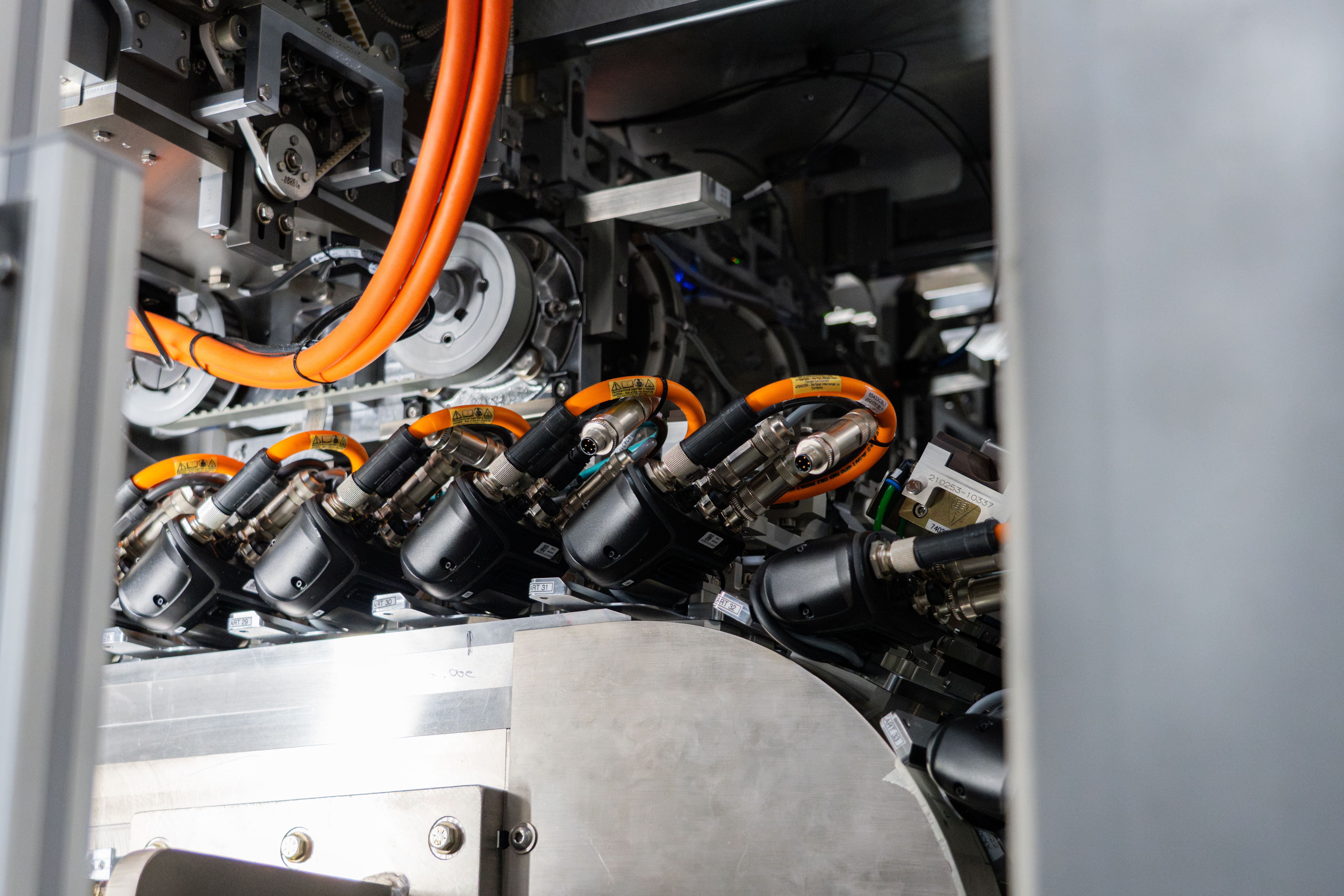In today's fast-paced manufacturing landscape, staying ahead of the competition often comes down to efficiency and productivity. Enter high-speed assembly machinery—an innovative solution that has the potential to revolutionize your production line. This blog will explore how these machines can enhance your operations, minimize downtime, and ultimately lead to greater profitability. Let’s dive into the transformative power of high-speed assembly machinery and discover how it can streamline your production process.

Understanding High-Speed Assembly Machinery
High-speed assembly machinery includes a range of automated systems designed to speed up production processes. They work by quickly and accurately assembling components, which reduces the time from assembly to delivery. Understanding how these machines operate is vital to leveraging their full potential.
At the heart of high-speed assembly machinery are sophisticated technologies such as robotics and conveyor systems. These elements work in unison to create an efficient assembly line. Each component, from mechanical arms to sensors, is engineered to handle tasks with precision and speed. A deep dive into these technologies reveals their complexity and the effectiveness with which they can tackle challenges faced in production environments.
Moreover, it’s essential to recognize the advancements that have been made in the software driving these machines. Intelligent software solutions enable scalability and flexibility, allowing manufacturers to respond rapidly to market demands. This adaptability plays a critical role in how high-speed assembly machinery can be a game changer for modern manufacturing.
Key Benefits of High-Speed Assembly Machinery
The benefits of high-speed assembly machinery are numerous. From increased operational efficiency and improved accuracy to reduced labor costs and enhanced product quality, these machines are designed to provide significant advantages over traditional assembly lines.
One of the standout benefits is the boost in productivity. By minimizing the time spent on each assembly task, companies can greatly increase their output without sacrificing quality. This means a higher volume of products can be brought to market, allowing businesses to meet customer demand more effectively. As we all know, in the realm of manufacturing, time is indeed money.
More importantly, high-speed assembly machinery significantly reduces the likelihood of errors that human workers might make. With precision engineering and automation, these machines can ensure consistency across large batches of products, leading to less waste and higher levels of customer satisfaction. Ultimately, the improved quality reflects positively on the brand, fostering loyalty and trust.
Additionally, the deployment of high-speed machinery can optimize labor costs. By automating repetitive tasks, businesses can reallocate their workforce to higher-value activities, such as quality control and product innovation. This shift not only enhances job satisfaction among employees but also prepares companies for future growth by focusing human capital where it's most impactful.
Types of High-Speed Assembly Machinery
There are various types of high-speed assembly machinery, including robotic arms, conveyor systems, and automated screw feeders. Each type serves a specific purpose, and understanding the differences can help manufacturers choose the right system for their needs.
Robotic arms are perhaps the most iconic representation of high-speed machinery, providing versatility and adaptability. They can handle everything from simple tasks to complex multi-step assembly processes. Meanwhile, conveyor systems create a seamless flow of materials, ensuring that every part moves quickly and efficiently from one stage to the next.
Automated screw feeders, on the other hand, represent a niche but essential component of assembly lines, specifically for products that require fastening. By automatically feeding and driving screws, these feeders not only save time but also reduce the physical strain on workers. The presence of these specialized machines highlights the tailored approach that can be taken to fit specific manufacturing needs.
Each of these machine types offers unique functionalities and can significantly impact production efficiency. Thus, potential buyers must assess their production requirements, consider scalability, and evaluate how each machine integrates with existing systems. Such thoroughness ensures that investments yield the highest returns.
Integrating High-Speed Assembly Machinery into Your Production Line
Integration of high-speed machinery requires careful planning and execution. Key considerations include layout optimization, equipment compatibility, and technology training for your team. This section will provide tips on how to seamlessly introduce these machines into your existing production workflow.
To start, assessing the current workflow is critical. Understanding how materials move through the production line can help manufacturers identify where machines could be introduced most effectively. This observation phase allows for a more strategic approach to integration while simultaneously minimizing disruption during the transition.
One crucial aspect of integration is ensuring that the new machinery is compatible with existing equipment. A mismatch can lead to bottlenecks or failures in the production process, which can have costly ramifications. Therefore, engaging with manufacturers who understand the nuances of machinery compatibility can save headaches down the line.
Finally, don’t overlook the importance of training. Your workforce is your most valuable asset, and equipping them with the knowledge and skills to operate these new machines is paramount to success. A comprehensive training program fosters a culture of safety and efficiency, translating to highly productive assembly lines.
Real-World Success Stories
Nothing speaks louder than success. In this section, we’ll highlight case studies of manufacturers who have successfully implemented high-speed assembly machinery—showing the tangible improvements in efficiency, cost savings, and output.
Consider the case of a major automotive manufacturer that integrated high-speed robotic arms into its assembly line. By automating the installation of components, they not only reduced assembly time by nearly 35% but also found that the error rate dropped significantly. With increased confidence in their output, they were able to extend warranties and build stronger customer relationships.
Another example comes from a consumer electronics company that was struggling to meet rising demand. By implementing a flexible conveyor system paired with automated screw feeders, they ramped up production while maintaining exceptional quality. This pivot in strategy resulted in a 50% increase in output without compromising on their established quality standards.
Future Trends in Assembly Technology
As technology continues to evolve, so does the realm of assembly machinery. This section will explore upcoming trends, including advancements in AI, machine learning, and IoT integration, which promise to further enhance the capabilities of high-speed assembly lines.
AI-driven systems are becoming increasingly prevalent in manufacturing. These smart machines can learn and adapt from their environment, allowing for real-time adjustments that optimize assembly processes. As they gather data during operations, they can forecast maintenance needs, reducing downtime and enhancing productivity.
Moreover, integrating the Internet of Things (IoT) with assembly machinery opens a new frontier. By connecting machines to the internet, manufacturers gain valuable insights into their operations, allowing for improved decision-making based on live data analytics. This connectivity promotes greater synergy within the production environment, yielding higher output and efficiency.
Overall, the trends in assembly technology not only signal progress but also present exciting opportunities for manufacturers to innovate. Embracing these advancements positions companies favorably in a competitive landscape, ensuring they can meet both current and future market demands.
Embracing the Future of Manufacturing
Implementing high-speed assembly machinery can provide a significant competitive edge for manufacturers looking to enhance their production capabilities. By increasing efficiency, reducing error rates, and optimizing workflow, these machines not only streamline operations but also lead to better product quality. As with any advancement, it’s crucial to evaluate your specific needs, work with reliable suppliers, and ensure proper training for your workforce. Embracing this technology can be a game changer for your production line, setting you on a path to sustained growth and success.





%20(1).avif)